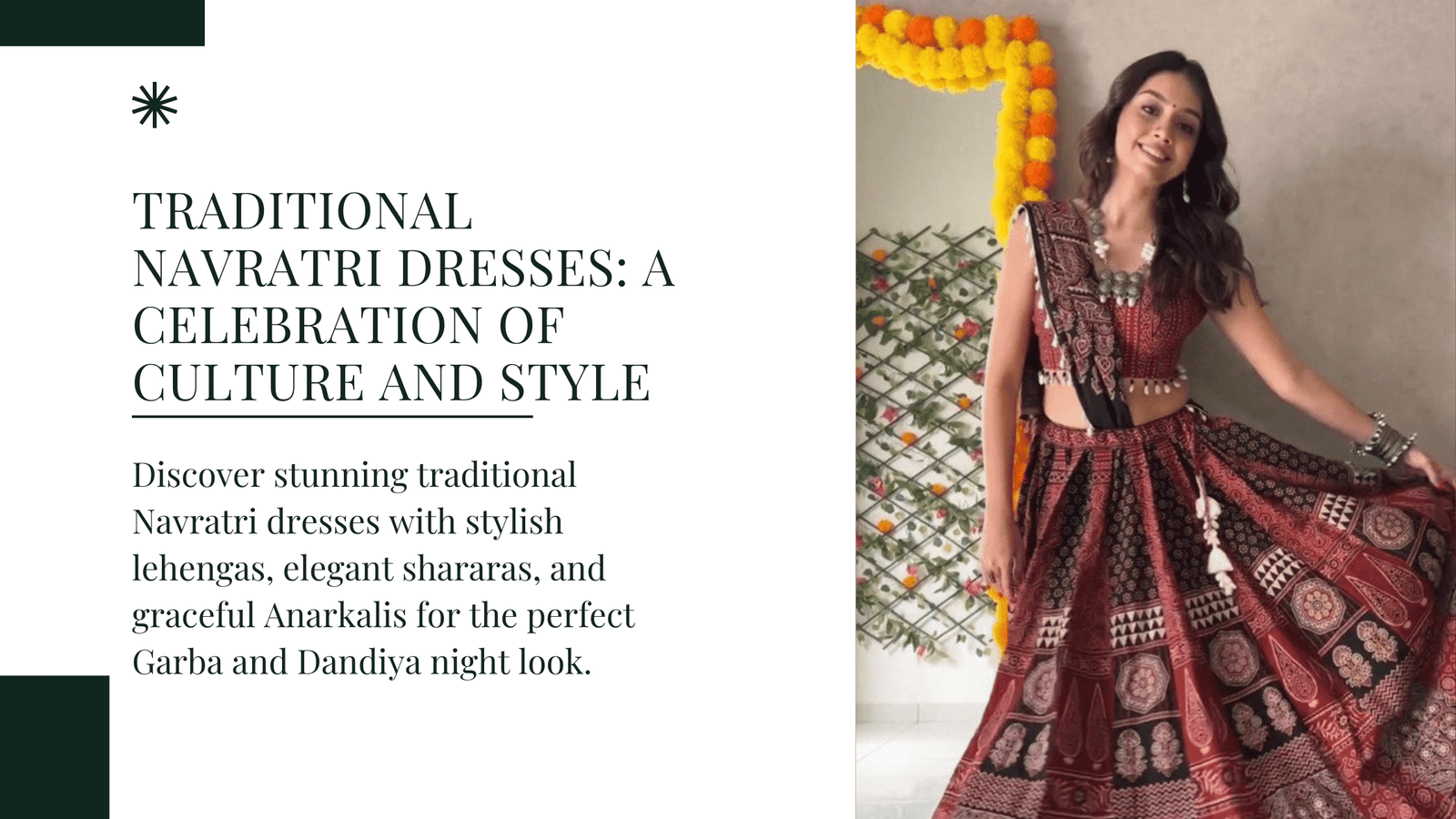Menu

Navratri, a vibrant festival celebrated across India, is not just a time for devotion but also a grand showcase of traditional attire. This nine-night celebration honors the divine feminine and is marked by energetic dance forms like Garba and Dandiya. As we delve into the world of traditional Navratri dresses, we explore the various outfits that embody the spirit of this festive occasion, ensuring you look stunning while participating in the celebrations.

The essence of Navratri fashion lies in its vibrancy and cultural significance. Each day of the festival is associated with specific colors, reflecting various aspects of the goddess Durga. Participants often choose outfits that resonate with these colors, making their attire not just a fashion statement but also a tribute to the divine.
When selecting traditional Navratri dresses, fabric choice plays a crucial role. Lightweight and breathable materials such as cotton, silk, and georgette are preferred to ensure comfort during long hours of dancing. Bright colors dominate the palette, with red, yellow, green, and blue being particularly popular. These colors not only enhance the festive spirit but also symbolize different energies associated with the goddess.
The Chaniya Choli is perhaps the most iconic outfit associated with Navratri. This ensemble consists of:
The Chaniya Choli is characterized by its intricate embroidery, vibrant colors, and reflective mirror work that sparkles as you dance. This outfit allows for ease of movement while ensuring you look graceful and elegant on the dance floor.

Similar to the Chaniya Choli, the Lehenga Choli offers a more structured silhouette. Typically more embellished with heavier embroidery or zari work, this outfit is perfect for those wanting to make a grand entrance. Pairing a contrasting choli with a beautifully draped dupatta can elevate your look while maintaining traditional roots.
Sarees hold a special place in Indian culture, and during Navratri, they are often adorned in styles that reflect regional traditions. The Bandhani saree, known for its unique tie-dye technique, is particularly popular among women celebrating in Gujarat and Rajasthan. Lightweight sarees allow for easy movement during dance performances while showcasing intricate designs.
For a more relaxed yet festive look, women can opt for an embroidered kurta paired with a matching skirt. This combination is not only stylish but also practical for dancing. The kurta’s length can vary, allowing for personal expression while maintaining cultural significance.

Men’s traditional attire during Navratri often includes the dhoti kurta, which combines comfort with style. This outfit allows men to participate fully in dance without feeling restricted. The dhoti’s loose fit keeps them cool during warm evenings filled with festivities.
In recent years, fusion wear has gained popularity among younger generations celebrating Navratri. This style incorporates elements from various traditional outfits to create unique ensembles. For instance:
Fusion wear allows individuals to express their personal style while honoring traditional aesthetics.
Accessories play an essential role in enhancing your Navratri outfit. Here are some key accessories to consider:
Makeup during Navratri should be bold yet festive. Bright eyeshadows, colorful bindis, and vibrant lipsticks can enhance your overall appearance. The goal is to reflect the joyous spirit of the festival while ensuring your makeup complements your outfit.
Navratri is not just about worship; it’s an opportunity to indulge in fashion that reflects our rich cultural heritage. Whether you choose a traditional Chaniya Choli or opt for modern fusion wear, what matters most is that your outfit resonates with your personality and allows you to celebrate freely.As you prepare for this vibrant festival, remember that each outfit tells a story—your story—of tradition, devotion, and joy. Embrace this chance to showcase your style while honoring the divine feminine through colorful attire that captures the essence of Navratri.By thoughtfully curating your wardrobe for this festival, you will not only stand out but also contribute to the rich tapestry of culture that makes Navratri truly special.

© 2024 SPJ All rights reserved.
WhatsApp us